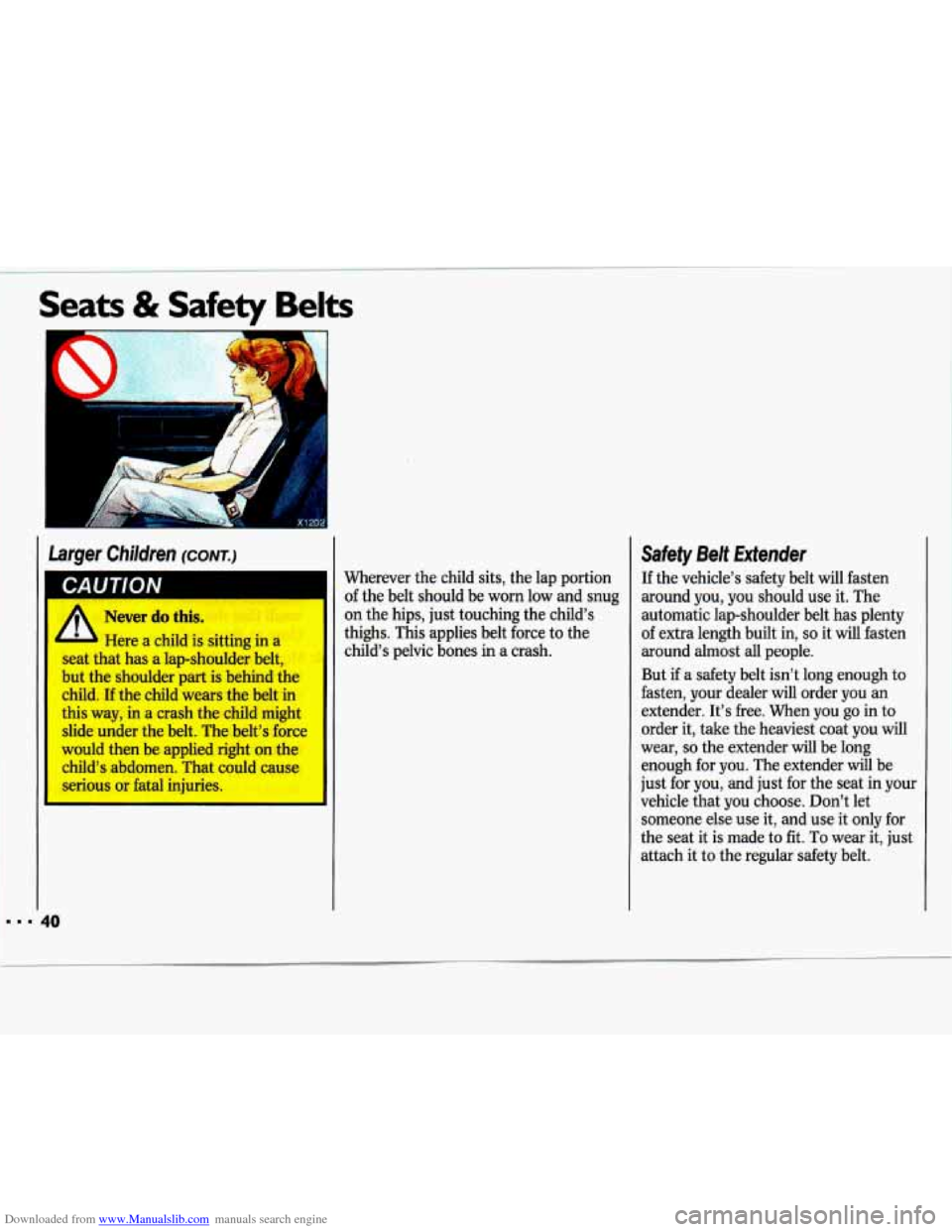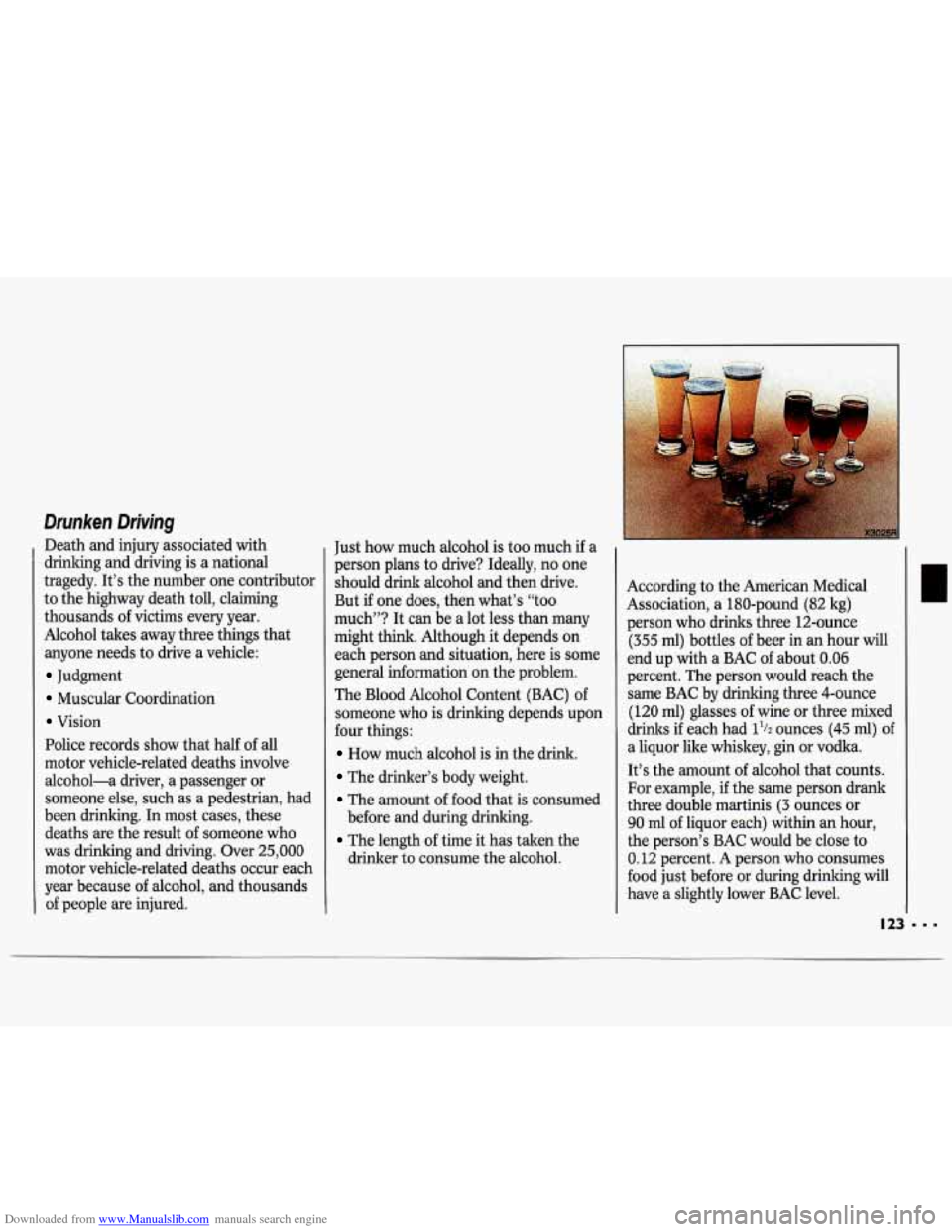length CHEVROLET LUMINA 1993 1.G Owners Manual
[x] Cancel search | Manufacturer: CHEVROLET, Model Year: 1993, Model line: LUMINA, Model: CHEVROLET LUMINA 1993 1.GPages: 324, PDF Size: 17.44 MB
Page 42 of 324

Downloaded from www.Manualslib.com manuals search engine Seats & Safety Belts
Larger Children (CONT.)
Never do this.
b Here a child is sitting in a
~ seat that has a lap-shoulder belt,
but the shoulder
part is behind the
child.
If the child wears the belt in
this way, in a crash the child might
’ slide under the belt. The belt’s force
would then be applied right on the
child’s abdomen. That could cause
serious or fatal injuries.
Wherever the child sits, the lap portion
of the belt should be worn low and snug
on the hips, just touching the child’s
thighs. This applies belt force
to the
child’s pelvic bones
in a crash.
Safety Belt Extender
If the vehicle’s safety belt will fasten
around
you, you should use it. The
automatic lap-shoulder belt has plenty
of extra length built in, so it will fasten
around almost all people.
But if a safety belt isn’t long enough to
fasten,
your dealer will order you an
extender. It’s hee. When you go in to
order it, take the heaviest coat you will
wear,
so the extender will be long
enough for
you. The extender will be
just for you, and just for the seat in your
vehicle that you choose. Don’t let
someone else use
it, and use it only for
the seat it is made to fit.
To wear it, just
attach it to the regular safety belt.
Page 125 of 324

Downloaded from www.Manualslib.com manuals search engine Drunken Driving
Death and injury associated with
drinlung and driving is
a national
tragedy. It’s the number one contributor
to the highway death toll, claiming
thousands of victims every year.
Alcohol takes away three things that
anyone needs to drive a vehicle:
Judgment
Muscular Coordination
Vision
Police records show that half
of all
motor vehicle-related deaths involve
alcohol-. driver, a passenger or
someone else, such as a pedestrian, had
been drinking. In most cases, these
deaths are the result of someone who
was drinking and driving. Over
25,000
motor vehicle-related deaths occur each
year because
of alcohol, and thousands
of people are injured. person plans
to drive? Ideally, no one
should drink alcohol and then drive.
But
if one does, then what’s “too
much”? It can be a lot less than many
might think. Although it depends on
each person and situation, here is some
general information on the problem.
The Blood Alcohol Content (BAC) of
someone who is drinking depends upon
four things:
How much alcohol is in the drink.
The drinker’s body weight.
The amount of food that is consumed
before and during drinking.
The length of time it has talcen the
drinker to consume the alcohol. According
to the American Medical
Association, a 180-pound
(82 kg)
person who drinks three 12-ounce
(355 ml) bottles of beer in an hour will
end up with a BAC of about 0.06
percent. The person would reach the
same BAC by drinking three 4-ounce
(120
ml) glasses of wine or three mixed
drinks
if each had 11/2 ounces (45 ml) of
a liquor like whiskey, gin or vodka.
It’s the amount
of alcohol that counts.
For example, if the same person drank
three double martinis
(3 ounces or
90 ml of liquor each) within an hour,
the person’s BAC would be close to
0.12 percent. A person who consumes
food just before or during drinlung will
have a slightly lower BAC level.